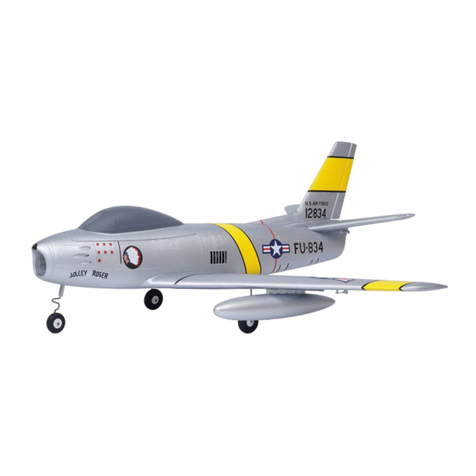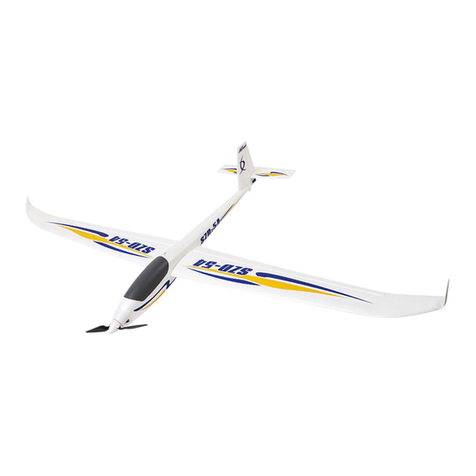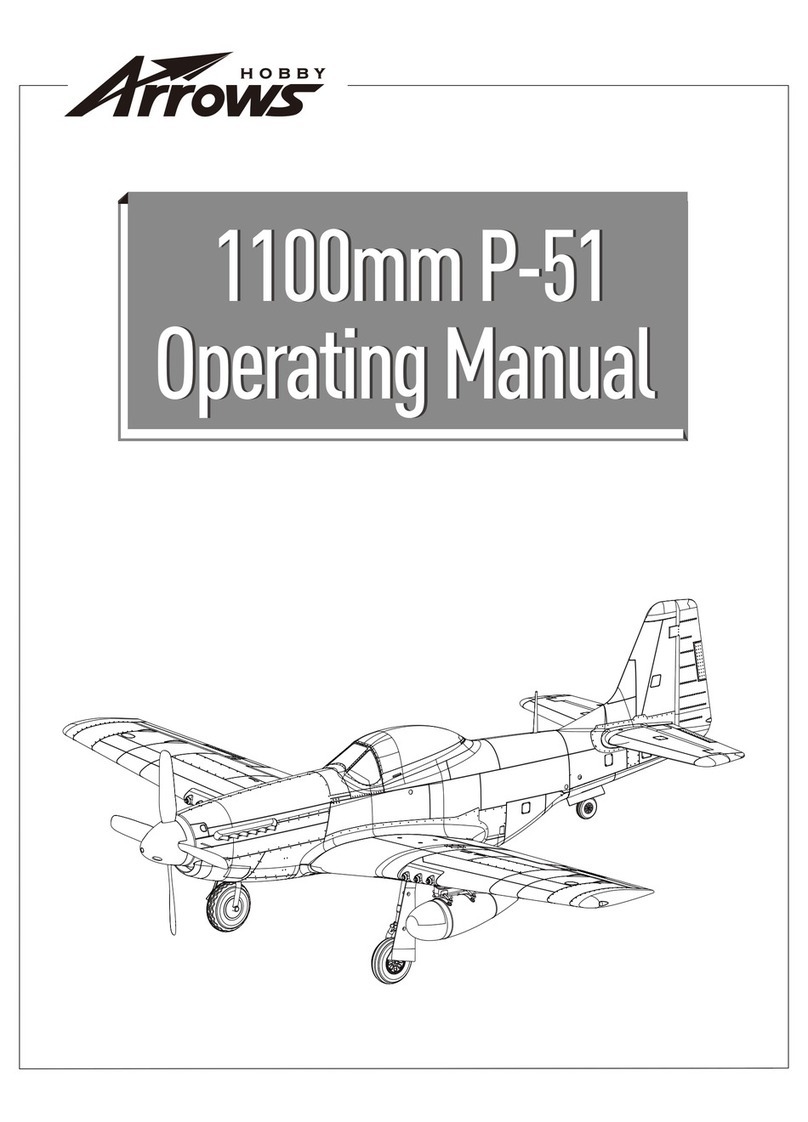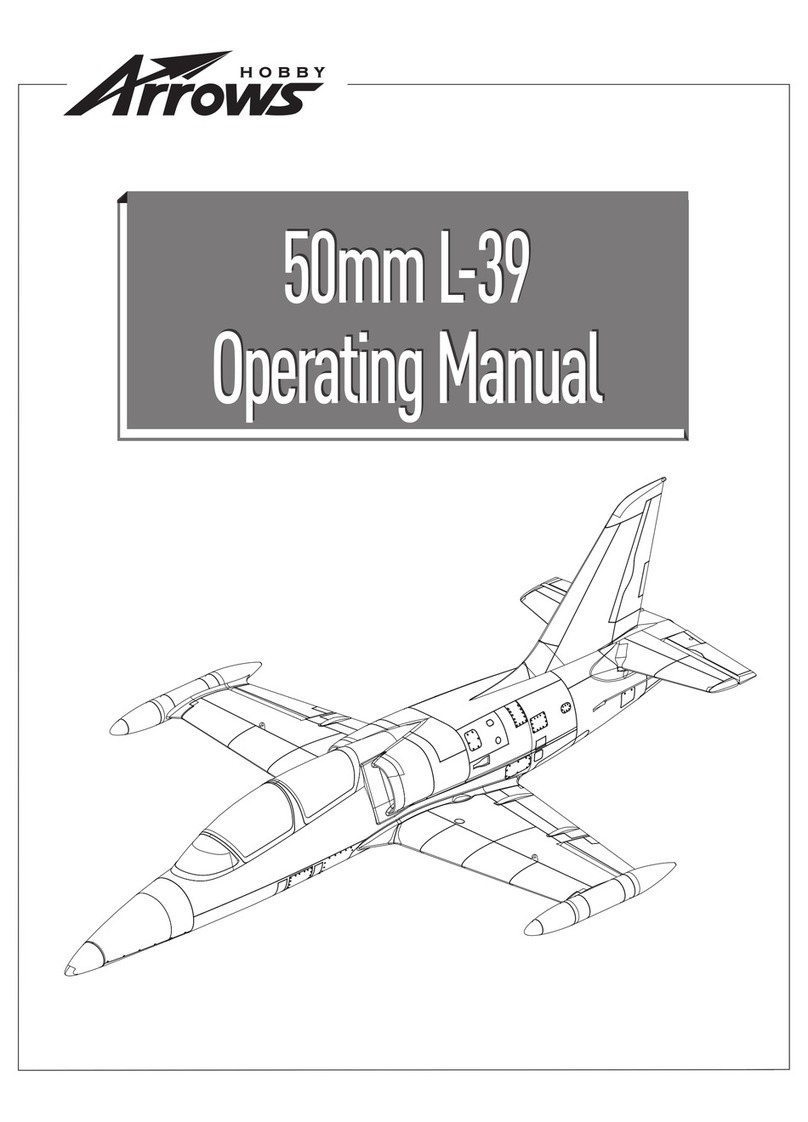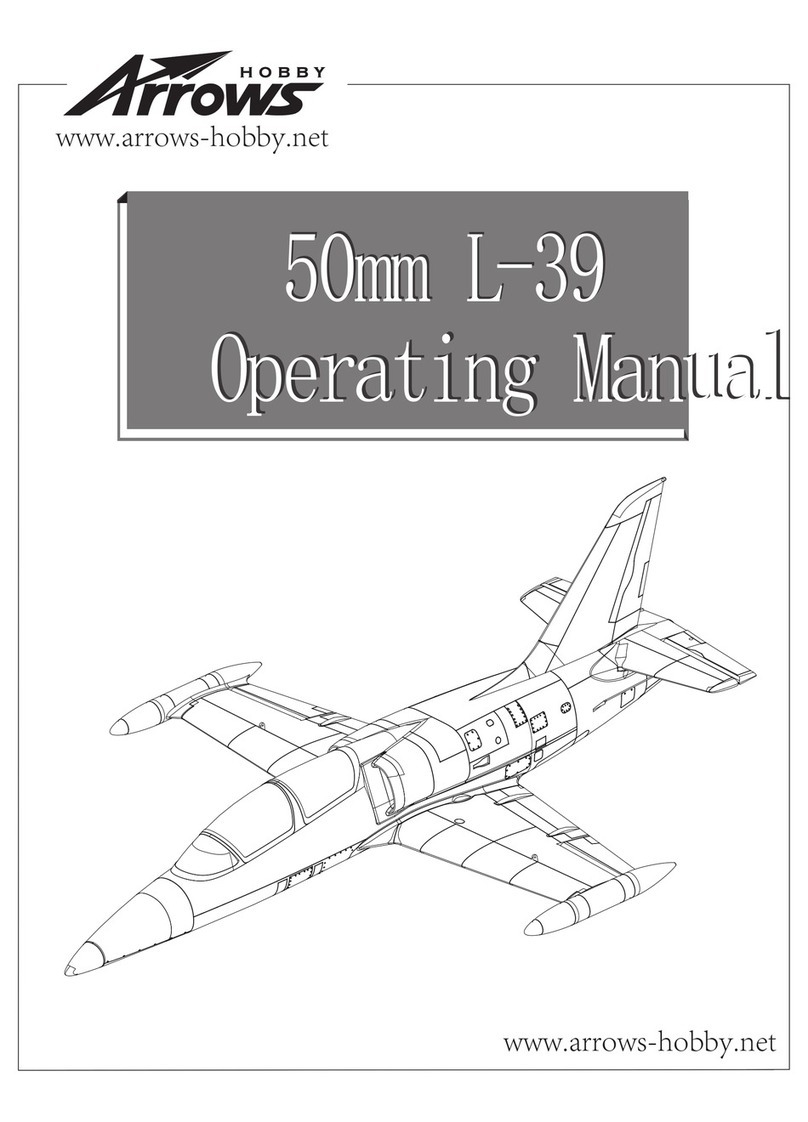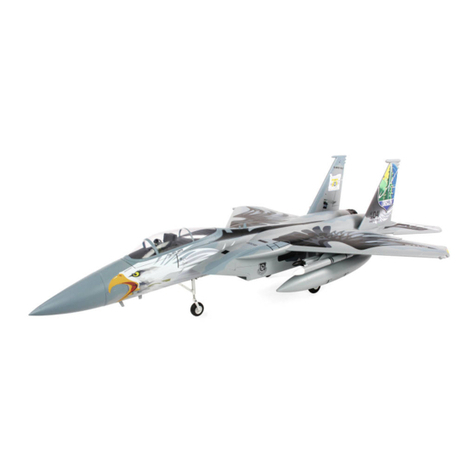
7
Flying tips
Landing
Land the aircraft when you start to feel sluggish motor response. If using a transmitter with a timer, set the timer so you
have enough ight time to make several landing approaches.The model’s three point landing gear allows the
model to land on hard surfaces. Align model directly into the wind and y down to the ground. Fly the airplane down to
the ground using 1/4-1/3 throttle to keep enough energy for proper are. Before the model touches down, always
fully decrease the throttle to avoid damaging the propeller or other components. The key to a great landing is to mana-
ge the power and elevator all the way to the ground and set down lightly on the main landing gear. With some practice,
you will be able to set the aircraft gently on its main gear and hold it that way until the speed reduces enough where
the nose wheel (tricycle landing gear aircraft) or tail wheel (tail draggers) settles onto the ground.
Maintenance
Repairs to the foam should be made with foam safe adhesives such as hot glue, foam safe CA, and 5min epoxy. When
parts are not repairable, see the spare parts list for ordering by item number.
Always check to make sure all screws on the aircraft are tightened. Pay special attention to make sure the spinner is
rmly in place before every ight.
Troubleshooting
Problem Possible Case Solution
Aircraft will not respond to
the throttle but responds to
other controls.
Excessive vibration or
propeller noise.
Control surfaces
unresponsive or sluggish.
Motor loses power
Motor power pulses then
motor loses power.
• ESC is not armed.
• Throttle channel is reversed.
• Damaged spinner, propeller, mo-
tor or motor mount.
• Loose propeller and spinner parts.
Propellor installed
• backwards.
• Control surface, control horn,
linkage or servo damage.
• Wire damaged or connections
loose.
• Damage to motor, or battery.
• Loss of power to aircraft.
• ESC uses default soft Low Voltage
Cutoff(LVC).
• Lower throttle stick and throttle trim to lowest
settings.
• Reverse throttle channel on transmitter.
• Replace damaged parts.
• Tighten parts for propeller adapter, propeller and
spinner.
• Remove and install propeller correctly.
• Replace or repair damaged parts and adjust con-
trols.
• Do a check of connections for loose wiring.
• Do a check of batteries, transmitter, receiver, ESC,
motor and wiring for damage(replace as needed).
• Land aircraft immediately and recharge ight
battery.
Reduced ight time or
aircraft underpowered.
• Flight battery charge is low
• Propeller installed backward.
• Flight battery damaged.
• Completely recharge ight battery.
• Replace ight battery and follow ight battery
instructions.
Controls reversed. • Channels are reversed in the
transmitter.
• Do the control direction test and adjust controls for
aircraft and transmitter.
